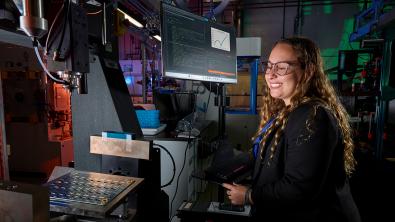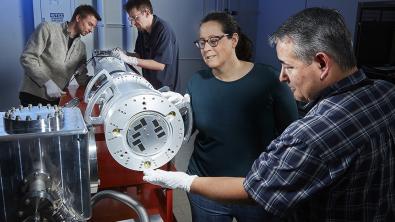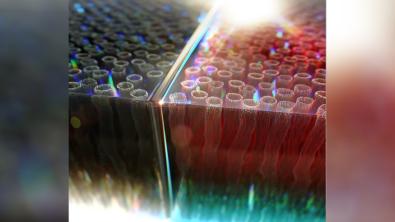Global energy production, storage and transport are both essential and environmentally impactful. New energy sources, managing and capturing the biproducts of energy expenditure, and repurposing of carbon dioxide are issues of national and global importance. Researchers at LLNL continue to broadly invent novel technologies that intersect at materials, mechanical, electrical, biological and chemical interfaces. Inventions in this portfolio range from bioreactors, to materials, to batteries, motors and new systems.
Portfolio News and Multimedia
To address this critical energy need, the California Energy Commission recently awarded local startup DarmokTech and Lawrence Livermore National Laboratory (LLNL) a grant of $2 million over three years to pursue recyclable, sodium polymer-based batteries. The technology aims to enhance cost-effective energy storage and grid reliability in the state and beyond. The collaboration is indicative of the type of public-private partnerships that develop as a result of technology transfer and the entrepreneurial programs run by LLNL’s Innovation and Partnerships Office (IPO).
The trade journal R&D World Magazine recently announced the winners of the awards, often called the “Oscars of innovation,” recognizing new commercial products, technologies and materials that are available for sale or license for their technological significance.
Lawrence Livermore National Laboratory (LLNL) scientists and engineers have earned four awards among the top 100 inventions worldwide. With this year’s results, the Laboratory has now collected a total of 186 R&D 100 awards since 1978.
Submitted through LLNL’s Innovation and Partnerships Office (IPO), these awards recognize the impact that Livermore innovation, in collaboration with industry partners, can have on the U.S. economy as well as globally.
A multidisciplinary team of researchers at Lawrence Livermore National Laboratory (LLNL) developed a new type of electrically controlled, near-infrared smart window that can cut near-infrared light transmission by almost 50%. Their secret ingredient? Vertically aligned carbon nanotubes—tiny, tube-shaped structures made from carbon atoms that are thousands of times thinner than a human hair. The research was published in Nano Letters.
Information about the opportunity to license the technology can be found here: Electrochromic Devices Made from VACNTs
Energy and Environment Technologies
Areas of Focus
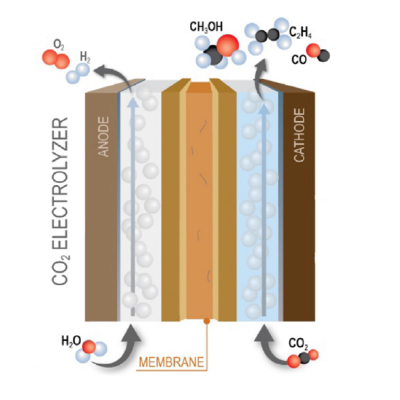
LLNL inventors have developed a gas diffusion electrode (GDE) architecture employing a multi-stack design. The first layer consists of a physical vapor deposited metallic catalyst film which then has a second composite layer deposited on top consisting of a second catalyst material mixed with a polymer electrolytes. The two layers working in tandem allow for near 100% CO…
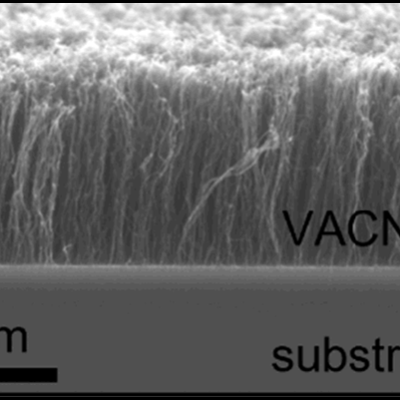
LLNL inventors have developed an electrochromic device containing Vertically Aligned single walled CNTs (VACNTs) with a range of diameters. The assembly of these devices into electrochromic windows filled with ionic liquid allows for reversible modulation of the Fermi level in the VACNT film. These electrochromic devices show strong voltage-dependent transmission of near-infrared…
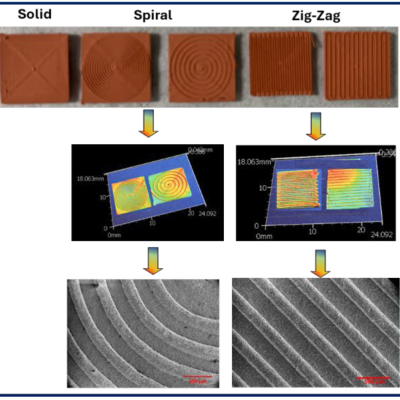
LLNL researchers has developed a composite copper current collector formulation readily used in DIW 3D printing to guide lithium-ion plating/dissolution during charging and discharging cycles.
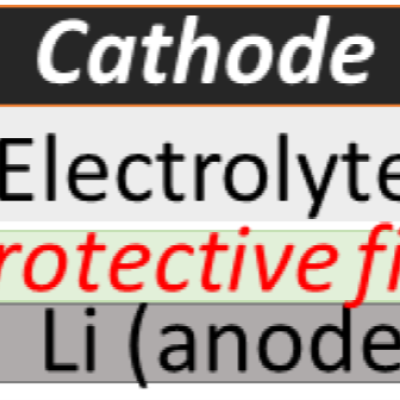
LLNL researchers have developed an artificial protective layer fabricated through a scalable and low-cost process, that can serve as a protective layer for improving the performance of any battery configuration using Li metal as an anode as well as the performance of anode-free Li-metal batteries or anode-free SSBs. This film can suppress Li-dendrite formation because of its mechanical…
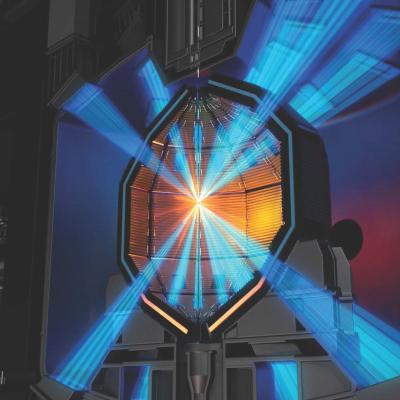
LLNL researchers have developed additive manufactured fuel targets for IFE. They have been successful in using TPL to fabricate low density (down to 60 mg/cm3) and low atomic number (CHO) polymeric foams for potential targets, and some have been tested at the OMEGA Laser Facility. With TPL, LLNL researchers have also been able to fabricate a full fuel capsule with diameter of ~ 5mm or…
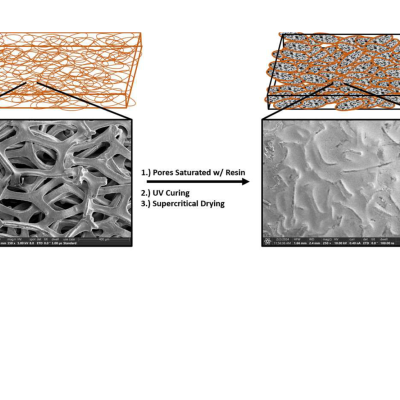
LLNL researchers have developed a novel method of making a GDE that starts with a porous, conductive structural framework made from metallic materials which standalone would be too hydrophilic and macroporous.
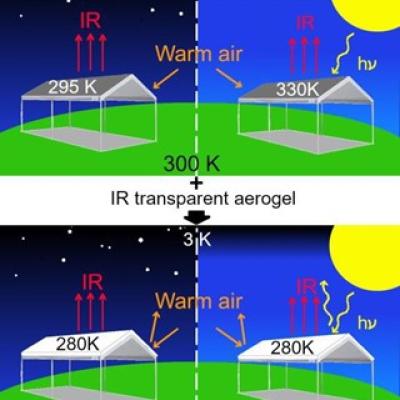
LLNL researchers have developed a passive cooling system which is (1) infrared transparent in the 8-13 um wavelength range, (2) optically reflective to reduce surface heating from sunlight, and (3) thermally insulating to avoid heating from surrounding air. The device uses a material composite that provides cooling via maintaining a temperature difference between a surface and ambient air…

LLNL researchers have developed a self-supporting structural material that promises more efficient carbon capture specifically from air, but generally from all CO2 containing gas sources. The material is produced with a liquid high-amine-content precursor polymer that is functionalized by adding on polymerizable end groups.

LLNL researchers have designed and produced, both conductive and non-conductive porous electrode components manufactured for improved metal deposition, discharging, and fluid dynamics in hybrid flow batteries. This is achieved through Direct Ink Writing (DIW) additive manufacturing. The engineered 3D electrodes enable uniform current distribution and even metal deposition during…

LLNL researchers have developed a method to enhance the performance of polyelectrolyte membranes by using a humidity-controlled crosslinking process which can be applied to precisely adjust the water channels of the membrane.
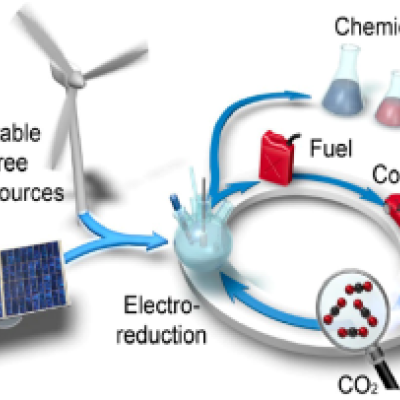
LLNL’s researchers use physical vapor deposition (sputter deposition or electron beam deposition) to coat an inert gasket material (i.e. PTFE) with a conductive metal (i.e. copper). The gas diffusion electrode overlaps onto the copper coated gasket to allow for electrical conductivity between the catalyst surface and the flow field/current collector of a CO2 electrolyzer. The coated gasket…

LLNL researchers have developed a method for enhancing the photocatalytic degradation of organic contaminants in water through the incorporation of patterned plasmonic metal nanostructures with TiO2 photocatalysts. The multi-step process to incorporate UV plasmonic metal nanostructures with the photocatalyst can be briefly summarized below:
• Nanosphere lithography…
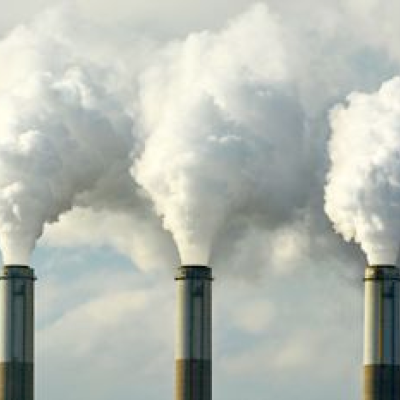
This invention solves a limitation in the current practice of adding hydroxyl functional groups to the aminopolymer through the use of an alternative synthetic approach. The novelty of our approach is to produce new structurally modified relatives of common aminopolymers (PEI and PPI) as well as new functionalized materials in which the hydroxyl groups are tethered to a carbon in the backbone…
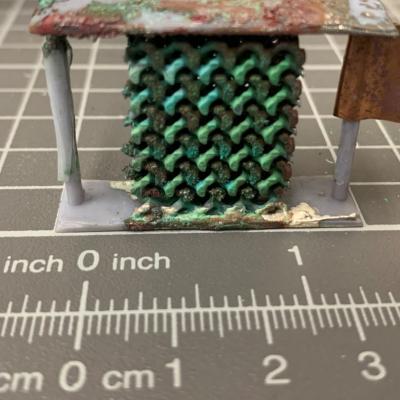
LLNL researchers have developed a fabrication process for creating 3D random interdigitated architectures of anodes and cathodes, eliminating the need for a membrane to separate them. This approach is similar to the repeating interdigitated multi-electrode architectures that also were developed at LLNL.
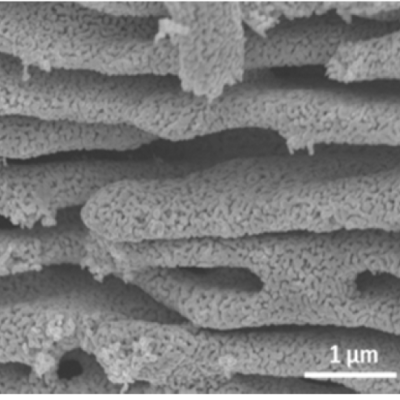
Using their computational design optimization, LLNL researchers have developed copper-based dilute alloy catalysts (contains <10 at.% of the minority metal alloy component) and demonstrated these novel catalysts have improved energy efficiency and selectivity of the methane conversion reaction. By alloying copper with a small amount of the electropositive minority metal element, the…
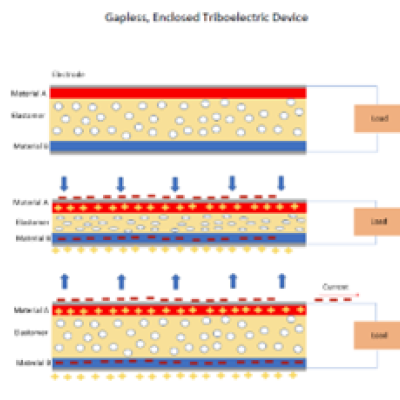
The two primary methods for actuating triboelectric (mechanical/friction) devices are contact separation and lateral sliding. Rather than an air gap to separate the contacts and sliding, LLNL researchers have conceived of a flexible, self-contained triboelectric device that can be compressed. The key to the invention is the dual function of a flexible, compressive material that…
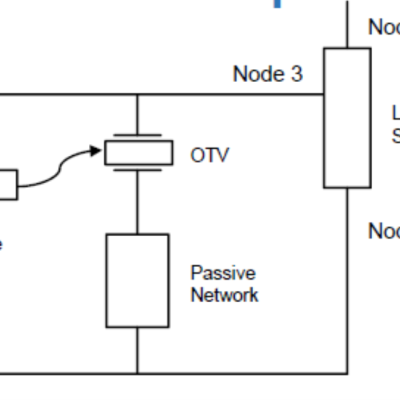
A thyristor will stay conducting until the current through the device is zero (“current zero”) or perhaps slightly negative. LLNL’s approach is to use the opticondistor (“OTV”) to force this current zero in order to force the device into an “off” state. By combining a light-activated thyristor with an OTV, a noise-immune, high efficiency, high-power switching device can be…
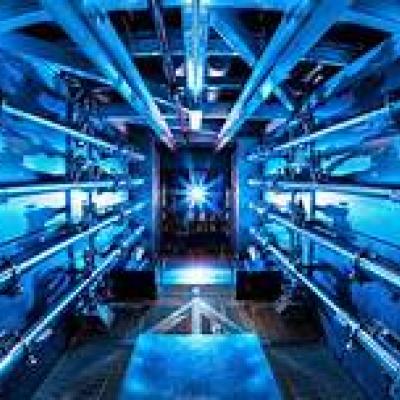
This invention configures multiple spherical substrate targets to roll independently of one another. The spheres’ rolling motion is deliberately randomized to promote uniform coating while eliminating the interaction (rubbing, sliding) of adjacent spheres that is present in conventional sphere coating designs. The devices’ novel structure features enable the collimation of depositing…
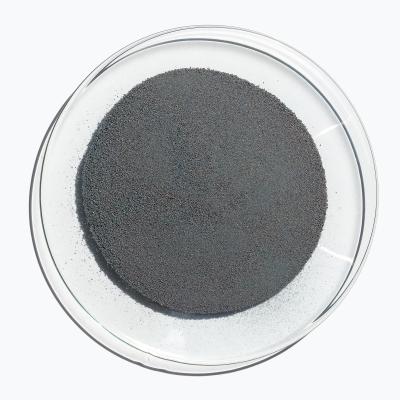
LLNL researchers have developed a Li-Sn-Zn ternary alloy and its method of production. Instead of traditional alloying techniques, the alloy was synthesized using mechanical alloying (high energy ball milling). With high purity elemental powders of lithium, tin and zinc, LLNL researchers were able to prepare Li60Sn20Zn20 as well as Li70Sn20Zn10 nanopowders.
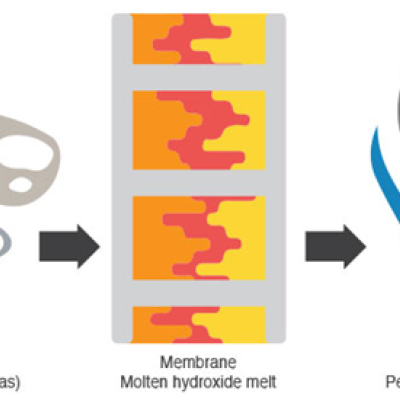
Facing these challenges, LLNL researchers focused on ceramic material as it is inherently inert and developed a host of inventions where porous ceramic membranes are prepared using a sacrificial polymer template. By controlling polymer/ceramic nanoparticle ratio and processing conditions, the pore morphology of the ceramic itself is controlled and optimized for the various applications. The…
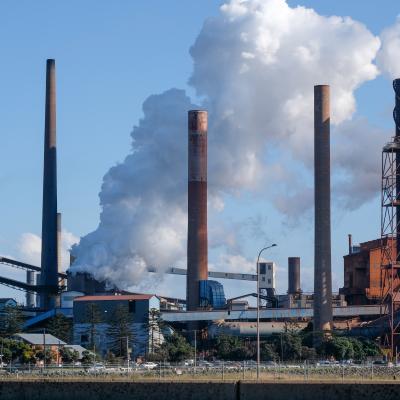
The heart of this LLNL invention lies in combining existing concepts for absorber intercooling and packing geometry into a novel configuration that yields the benefits of in-line intercooling at reduced capital cost and equipment size. The technology utilizes LLNL-developed Triply Periodic Minimal Surface (TPMS) structures (US Patent No. 11,389,765) that are produced using additive…
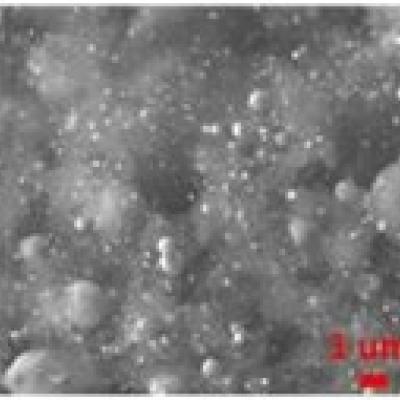
LLNL researchers have developed novel catalytic electrodes for energy storage applications from inexpensive starting materials. The LLNL team are using a group of 3D printing inks that contain precursors of earth-abundant catalysts (e.g. Ni, Co and Fe compounds); the catalytic materials are imbedded into the ink matrix. To carefully control the properties such as surface area and…

LLNL has co-developed a number of technologies thatuse cold spray deposition that enable new designs for functional materials with low waste.
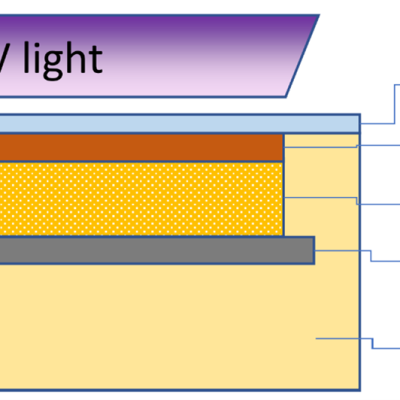
LLNL’s novel approach is to use separators based on a bilayer structure that consists of a self-formed skin layer on a microporous membrane. The highly porous membrane is made of 1,6-hexanediol diacrylate (HDDA), which provides high Li ion conductivity. The skin layer is relatively dense that allows for easy Li-ion transport but can effectively block undesired constituents such as…
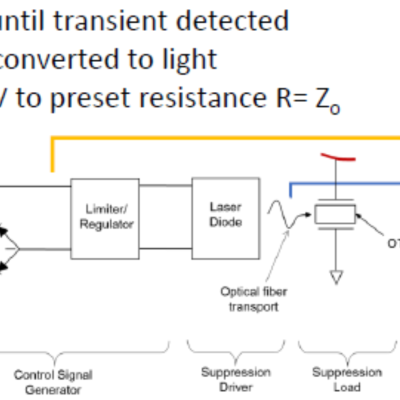
The approach is to leverage the fact that a momentary “load” equal to the power transmission line impedance, (Z0), during the transient can suppress its propagation. Z(0) is typically a fixed impedance of several hundred ohms based on the geometry of most single wire transmission lines.
So, an isolated self-powered opticondistor (OTV) system may provide an ultrafast method of…
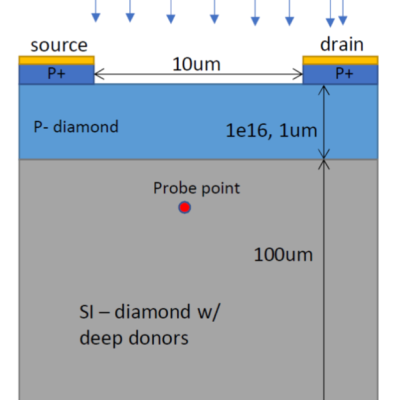
LLNL’s novel approach is to use diamond substrates with the desired donor (nitrogen) and acceptor (boron) impurities. In order to optically activate these deep impurities, the invention requires at least one externally or internally integrated light source. The initial exposure to light can set up the desired conduction current, after which the light source could be turned…
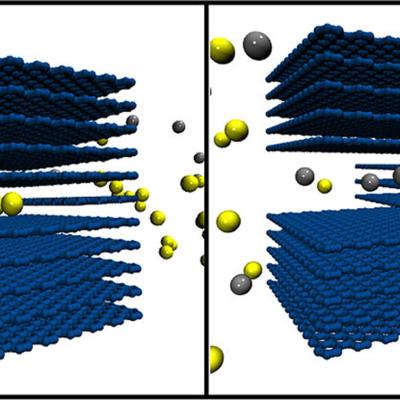
LLNL researchers have developed a novel technique of flow-through electrode capacitive deioinization (FTE-CDI) which can be tailored for selective ion removal from water. It uses porous carbon aerogel materials as capacitive deionization (CDI) electrodes to selectively remove scale forming divalent ions (e.g., magnesium, calcium) from "hard" waters.
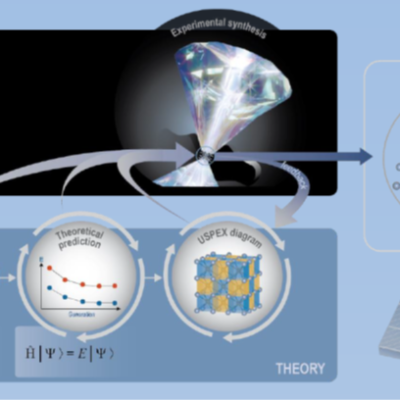
LLNL inventors have devised a solely pressure-based method for producing Li3P and Na3P using a diamond anvil cell at room temperature. By applying relatively low pressure (<1GPa) to elemental mixtures of lithium / phosphorous and sodium / phosphorous and LLNL researchers were able to synthesize lithium- and sodium-rich phosphorous compounds (Li3P and Na3P), respectively.
Caption…

LLNL’s novel approach to enable MVDC power systems to operate safely is to develop a wideband gap bulk optical semiconductor switch (WBG BOSS) circuit breaker. For higher power, efficiency and temperature operation, vanadium-doped silicon carbide (V-doped SiC) appears to be the most promising basis for WBG BOSS circuit breaker (other dopants like aluminum, boron and nitrogen may further…
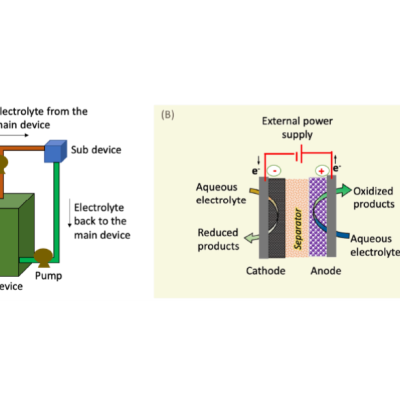
LLNL researchers has developed an approach to mitigate HER on the ‘plating’ electrode, which uses a sub-device as a rebalancing cell to restore electrolyte properties, including pH, conductivity, and capacity across the main device of the flow battery. This sub-device, which may need to be powered externally, has three major physical components: (1) a cathode electrode, (2) an anode…
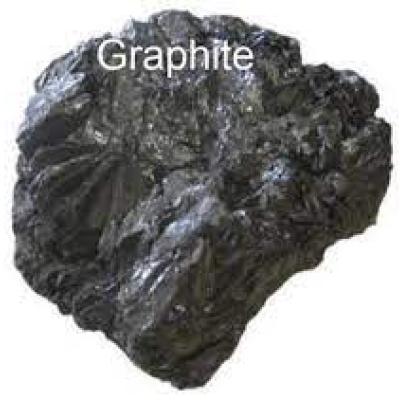
LLNL’s innovation offers an alternate synthetic route to graphite at lower cost using a molten salt mixture of CaCl2-CaCO3-CaO. The synthetic production of graphite and other high-value carbon materials is accomplished in molten salt media via electrochemical reduction and transformation of the carbon from the carbonate ion. The broad electrochemical window of molten salts enables the…
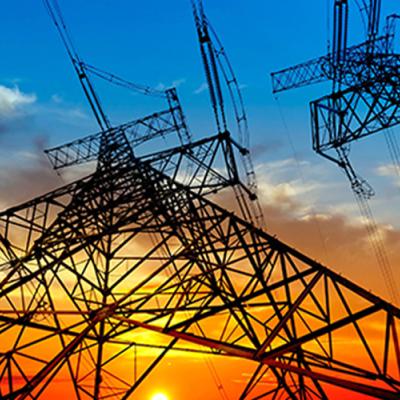
LLNL has developed a novel methodology for using commercially available automated sensors and actuators which can be deployed at scale in large appliances and plug-in EVs to provide as needed electric grid stabilization capabilities. The approach comprises of a population of voltage relays with a range of setpoints that would gradually reduce load as voltage falls. More severe voltage…

Improving the active material of the Zn anode is critical to improving the practicality of Zn-MnO2 battery technology. LLNL researchers have developed a new category of 3D structured Zn anode using a direct-ink writing (DIW) printing process to create innovative hierarchical architectures. The DIW ink, which is a gel-based mixture composed of zinc metal powder and organic binders, is…
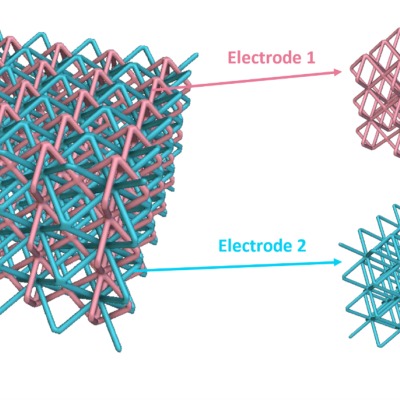
The approach developed by LLNL researchers is to use computer-aided design and advanced manufacturing methods to fabricate two or more continuous electrode structures intertwining in 3D space. This configuration provides improved control electric field uniformity and the ability to carry out multiple electrochemical reactions. This invention utilizes design tools to create…
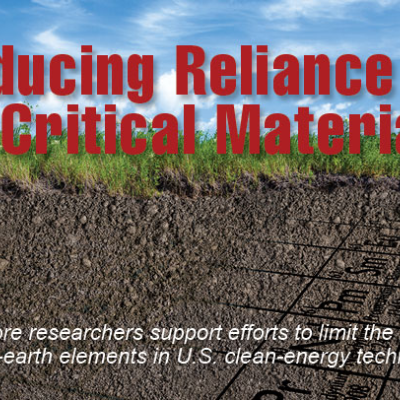
CMI—a DOE Energy Innovation Hub—is a public/private partnership led by the Ames Laboratory that brings together the best and brightest research minds from universities, national laboratories (including LLNL), and the private sector to find innovative technology solutions to make better use of materials critical to the success of clean energy technologies as well as develop resilient and secure…
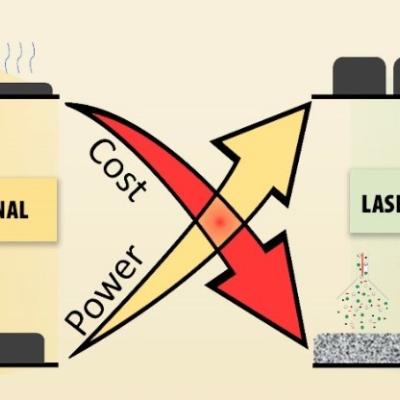
To address many of the aforementioned challenges of manufacturing LIBs and SSBs, LLNL researchers have developed a number of inventions that offer proposed solutions for their components:
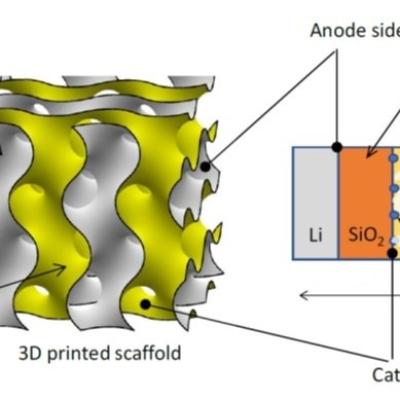
LLNL researchers have developed a new 3D printable lithium-air battery that uses a novel thin solid state ceramic electrolyte. LLNL’s invention overcomes the combined challenges of low power density and low cycle life in previously designed lithium-air batteries by using solid state electrolytes to achieve stability and multiscale structuring of the electrolyte to achieve low…

This technology can replace combustion heat with renewable energy in the form of electricity from variable renewable energy (VRE), such as photovoltaic (PV) solar and clean hydrogen (H2). Granular media functions as a heat-storage medium that enables renewable energy to be time-shifted from when it is available to when it is needed by an industrial process. The heated granular media, as the…
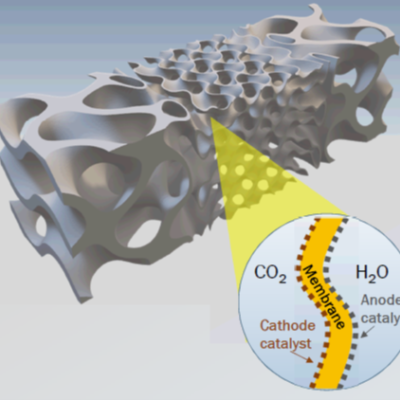
The novel LLNL approach is to use projection microstereolithography (LAPµSL), starting with a photocurable methacrylate resin formulation consisting of a combination of a photoinitiator, photoabsorber, inhibitor, solvents, and other additives. Prior to use, the resin is pretreated to control viscosity for easier handling. The resin is fed to a LAPµSL printer which employs a near UV…
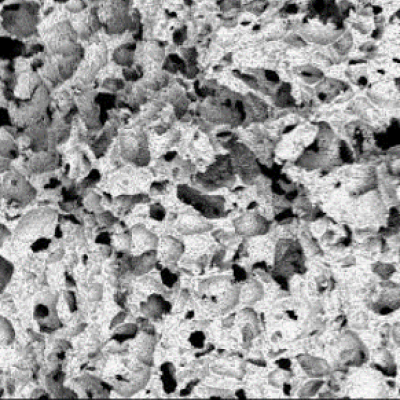
The inventors have developed a 3% Yttria partially-stabilized Zirconia (3YZ) ceramic ink that produces parts with both nano and microporosity and is compatible with two AM techniques: DIW and projection microstereolithography (PμSL). The 3YZ nano-porous ceramic printed parts had engineered macro cavities measuring several millimeters in length, wall thicknesses ranging from 200 to 540 μm, and…
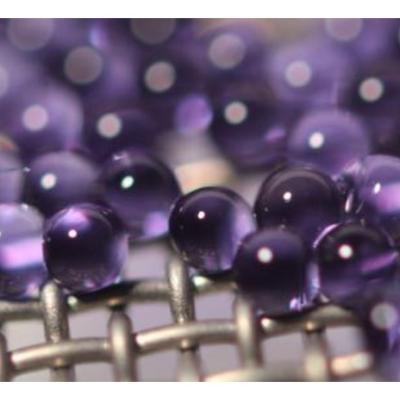
This invention describes a multiple nozzle microfluidic unit that allows simultaneous generation streams of multiple layered coaxial liquid jets. Liquids are pumped into the device at a combined flow rate from 100 mL/hr to 10 L/hr. Droplets are created with diameters in the range of 1 µm to 5 mm and can be created with 1-2 shell layers encapsulating fluid. Droplets created from the system can…
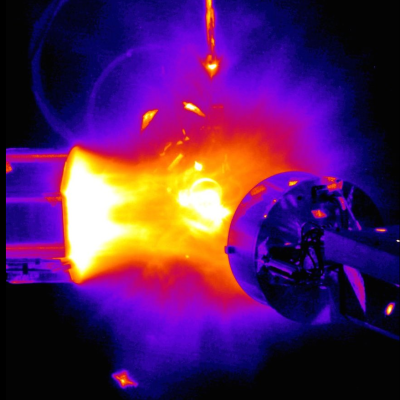
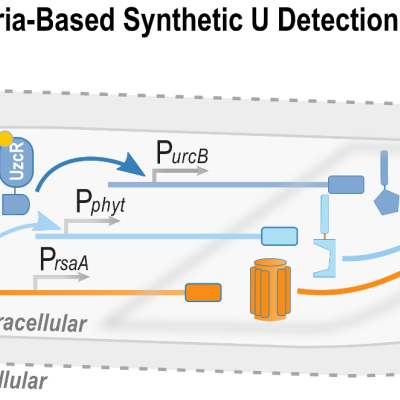
Using native bacterial regulatory systems, LLNL researchers have developed whole-cell biosensors that can be used in aqueous samples for sensitive and selective in situ detection of the uranyl oxycation (UO22+), the most toxic and stable form of U in oxygenated environments. Specifically, two functionally independent, native U-responsive regulatory systems, UzcRS and UrpRS, were integrated…
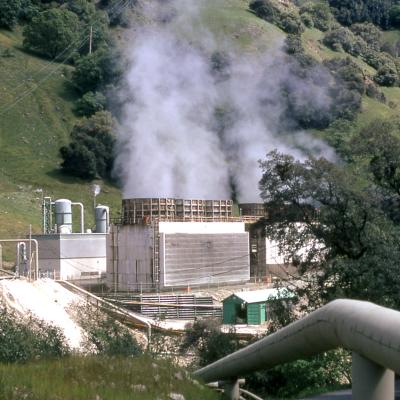
LLNL has a patented process to produce colloidal silica directly from geothermal fluids. Livermore’s process uses membranes to produce a mono-dispense slurry of colloidal silica particles for which there are several applications. LLNL has demonstrated that colloidal silica solutions that result from extraction of silica from geothermal fluids undergo a transition to a solid gel over a range of…

Nanomaterials that are emerging out of cutting edge nanotechnology research are a key component for an energy revolution. Carbon-based nanomaterials are ushering in the "new carbon age" with carbon nanotubes, nanoporous carbons, and graphene nanosheets that will prove necessary to provide sustainable energy applications that lessen our dependence on fossil fuels.
Carbon aerogels (CAs)…

LLNL has developed a noble gas mass spectrometry facility that houses a state-of-the-art water-gas separation manifold and mass spectrometry system designed specifically for high throughput of groundwater samples. The fully automated, computer-controlled manifold system allows analysis of the full suite of noble gases (3He/4He, He, Ne, Ar, Kr, and Xe concentrations), along with low level…
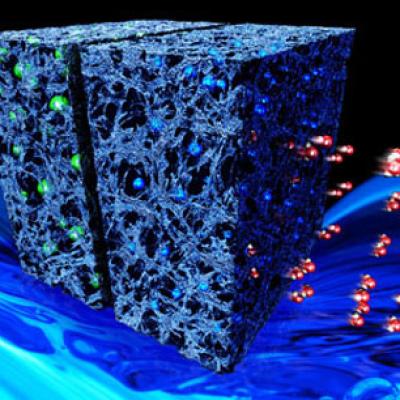
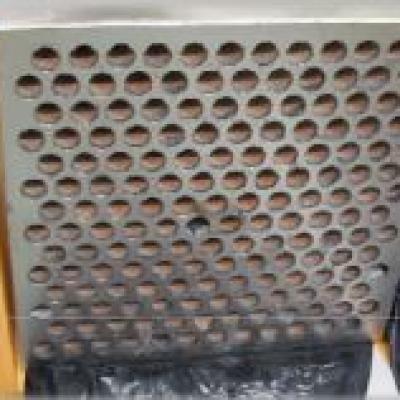
A ceramic HEPA filter designed to meet commercial and DOE requirements, as well as to minimize upgrade installation logistics for use in existing facilities. Current key performance requirements are described in DOE Standard 3020. The ceramic filter is designed to be nonflammable, corrosion resistant, and compatible with high temperatures and moisture. The ceramic filter will significantly…
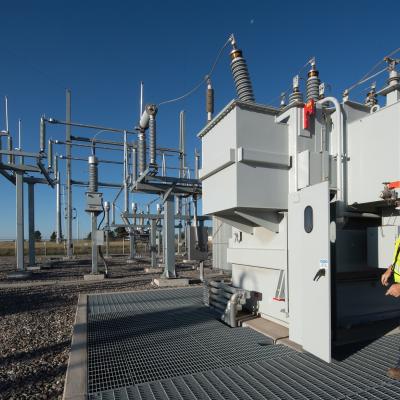
An invention at LLNL uses a mixture of solid and liquid dielectric media. This combination has properties that are an improvement over either separately. The solid phase, in the form of small pellets, inhibits fluid motion, which reduces leakage currents, while the liquid phase (dielectric oil) provides self-repair capabilities. Also, since the media is removable, the high voltage equipment…


